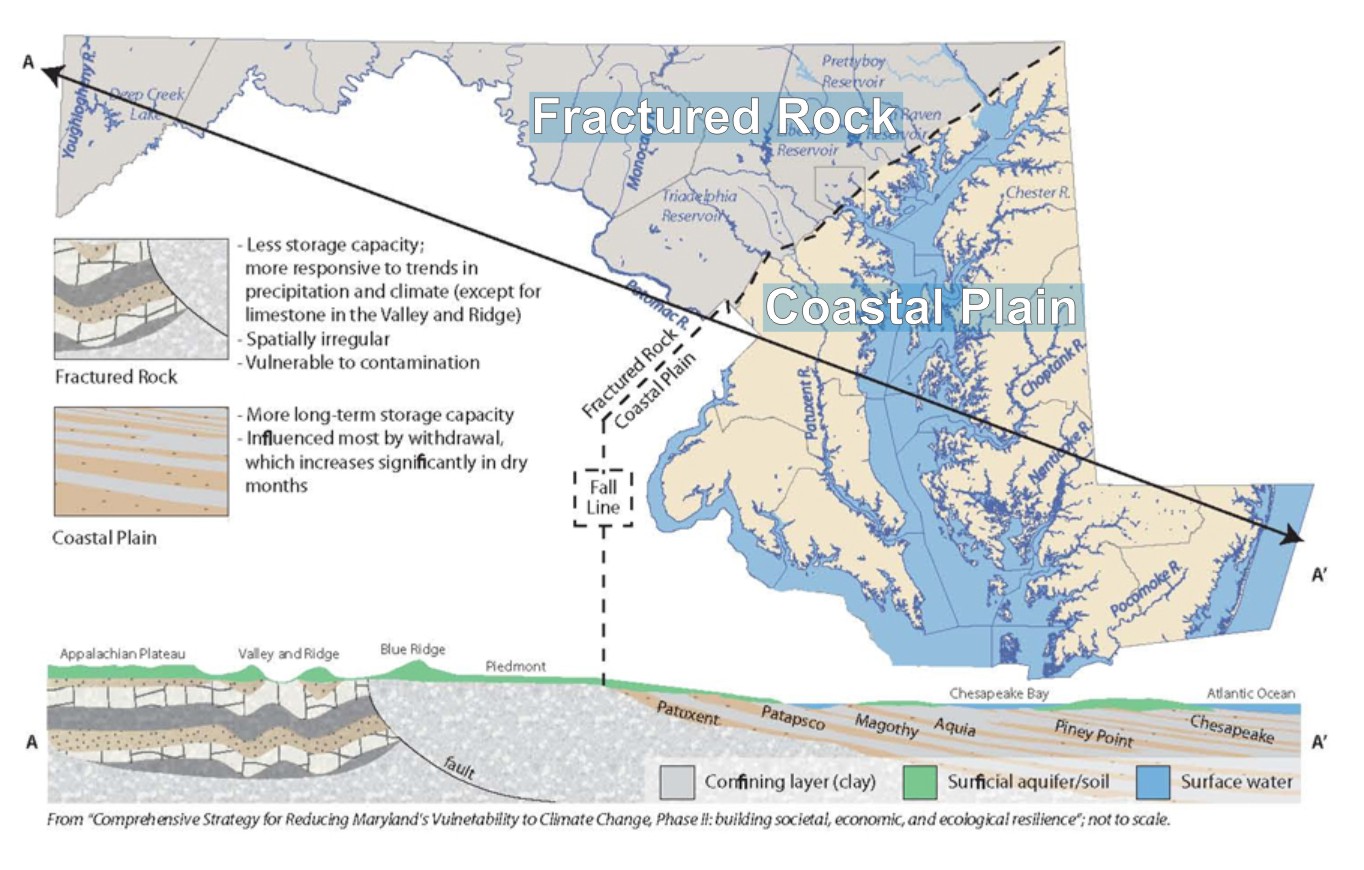| Comprehensive Assessment of Water Supply in Maryland | 
|
Maryland's water supply comes from streams and rivers, groundwater, and reservoirs. In the Baltimore region and other metropolitan areas, the primary source of water is surface water (streams or reservoirs). Other communities use groundwater withdrawn from fractured rock aquifers in central and western Maryland or Coastal Plain aquifers in Southern Maryland and the Eastern Shore.
Water regulators, planners, and policy makers need to know how much water can be withdrawn from wells and streams without causing adverse impacts. The Advisory Committee on the Management and Protection of the State's Water Resources ("Wolman Report") recommended that the State conduct a comprehensive study of the water-supply resources of Maryland. This website presents information about the ongoing studies.
Fractured Rock and Coastal Plains Regions
of Maryland
click regions for more information

What are the challenges to managing water sustainability? |
What needs to be done? |
Who is involved? |
||
|
Obtain better information and tools to:
Study hydrologic and geologic factors related to water supply Understand and manage water use Determine stream-flow requirements for ecological integrity Coastal Plain Study Period: 2007 - PresentFractured Rock Study Period: 2010 - Present |
|
|
|